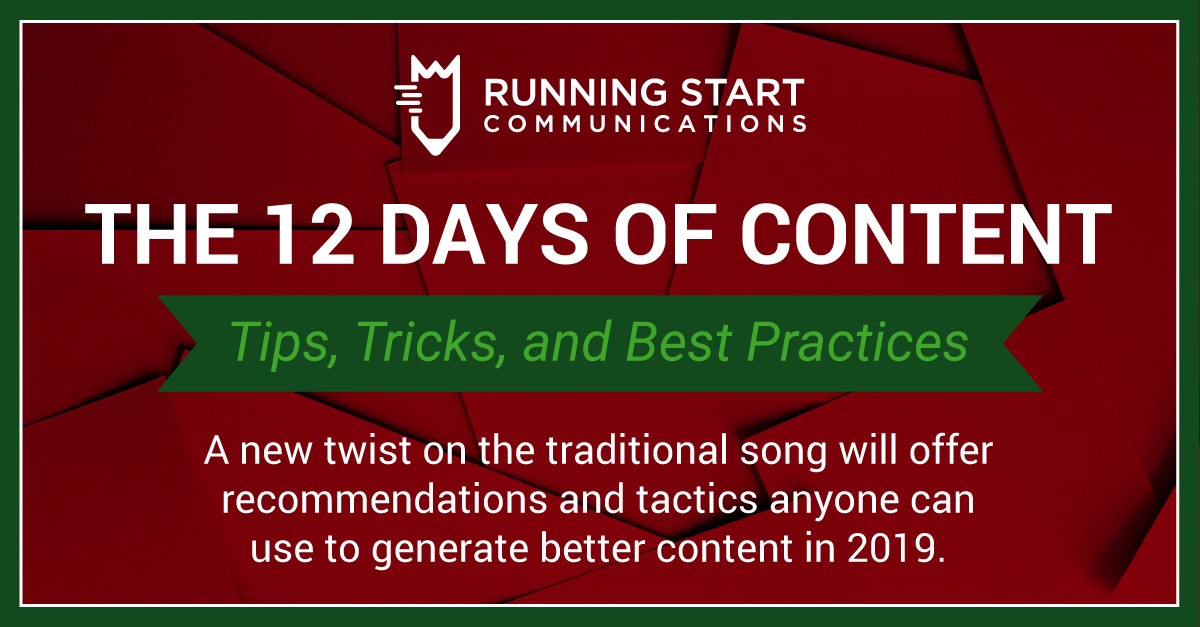
On the seventh day of “Content,” a random writer gave to me …
Seven elements of a good blog.
On Day Five of this series, we covered the topic of new ways to think about blog writing, and discussed new mindsets to improve content.
I received some feedback from one friend, who told me he liked the article, but was looking for specific examples or ways to put these ideas in action.
So today’s article is designed to drill down a little, to pair the five bigger thoughts with seven specific things you can do to write better blogs and content.
- Write a great headline. This is related to the previous recommendation that we should all be more creative with blogs. Writing a great headline is so important to stand out in the sea of content and draw your readers in. Don’t miss this opportunity by writing a “label” headline or worse, a bland, blah headline that sounds like everyone else.
- Tell a story. Again, have a little fun with your writing and use creative elements such as storytelling, analogies, or metaphors to surprise your readers. Hook their attention, make them wonder how you’re going to pay it off, and then deliver. Guess what? Your reader just read your entire blog.
- Be credible. Use current research, statistics, news, surveys, and other data to support your point. Even a single well-researched statistic can strengthen your next article and reinforce your status as a credible thought leader. Make sure your research is current and best represents your point. In other words, don’t be lazy with it.
- Get visual. WordPress and other blogging tools make it very easy to embed screenshots, videos, thumbnails, and other graphics. Readers will appreciate it, and these visuals will help break up long blocks of copy and tell your story better.
- Use subheads wisely. In Day 3 of this blog series, we found that two-thirds of your audience will spend three minutes or less reading your content. So we need to use subheads to concisely convey a benefit or quickly let readers know what they’ll find in this section. Don’t overlook their importance.
- Provide a map. Similarly, you may want to include certain options to help readers navigate long content. This can include a quick “this article contains … ” or even a bulleted sidebar that highlights key points of your blog.
- Be natural. Speak to your audience in the same way you’d talk to a friend. Write in a casual, personable, and engaging tone. The same thought can be applied to adding back links to older blogs. Find a way to work them in naturally, without forcing them on the reader.
I hope these are specific enough and help you with your next blog. I actually had one or two more thoughts, but had to stop at seven. But if you have feedback, or tips of your own, I’d love to hear it.
It’s hard to believe Day 7 is now complete. It’s been a bit of extra work, but fun, and I hope it’s valuable for you.
I’m also looking forward to tomorrow’s article, which will discuss eight “weasel-y” marketing words we all need to give up in 2019. I hope you’ll check it out.

Leave A Comment